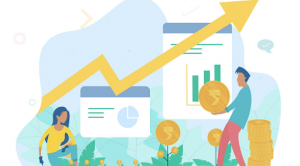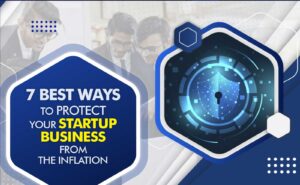Starting a business can be challenging. Most startups need extra cash when starting a business, which can be costly. But there are many ways to get the money you need, like applying for loans such as personal loans or quick cash loans online. However, this is not the only factor you need to consider when you want to start a business. One must also know how to create and implement your business model if you want your startup to be successful. Even though it takes time and work, it will be well worth considering how well your business is doing in the long run. The fact is that there are numerous different business types, each with unique advantages and disadvantages. You may need some time to determine which is best for you.
This article will help you determine the ideal business model for your startup.

What is a business model?
An Ideal business model refers to a company’s profit-making strategy. It lists any incurred costs, the goods or services the company aims to sell, and its chosen target customers. Both new and successful businesses need strong business models. They help young, emerging companies attract capital, hire talent, and engage management and personnel.
Business enterprises must continuously alter their business models to keep informed of emerging trends and problems. It also assists employees in understanding the future of an organization they might want to work for and investors in researching companies that interest them.
Additionally, it’s essential to understand that a business model differs from a business plan. A business plan is a detailed document that defines your future and how you’ll go about reaching it, whereas your business model is the revenue-generating strategy you’re using.

18 common business models
There are numerous various business models available. However, businesses typically rely on a basic model that adapts to their particular needs.
Your industry will play a role in your decisions, but what your clients are prepared to pay for will matter even more. Here are a few of the most common types of business models.
Subscription business model
Subscription business models are built on offering a product or service in exchange for recurring subscription money on a monthly or yearly basis. Over customer acquisition, they put more emphasis on customer retention. Subscription business models essentially concentrate on how money is generated so that a single consumer makes numerous payments for continued access to a good or service rather than a sizable upfront one-time charge. The economy is moving away from ownership of automobiles, software, entertainment, and shopping and towards more subscriptions. The customer’s lifetime value (LTV) rises as a result.
Example: Netflix
Marketplace business model
A marketplace business model enables shops to offer their goods while giving customers straightforward tools for getting in touch with retailers. This business model also provides monetization through several methods, such as purchase fees or added services.
Example: Amazon
Ads-based business model
Although advertising models have been around for a while, they are starting to stand out more and more as the world becomes more digital. To use this model while displaying advertising to your readers and viewers, you should provide content that people desire to read and watch.
With this business strategy, you may give people free content while making money off of advertisements. This strategy occasionally coexists with the crowdsourcing model, in which users provide the material themselves.
Example: Youtube
Freemium business model
Freemium business models draw clients by exposing them to simple, limited offerings. Then, after the customer has used the service, the business tries to upsell them on a more expensive, sophisticated product. Finally, although a consumer might theoretically remain a freemium member indefinitely, a company seeks to highlight the advantages of upgrading.
Example: Spotify
Franchising business model
A business franchise model, often known as franchising, is a contractual business model or relationship in which an established brand, known as the ‘franchisor,’ permits an independent business owner, or franchisee, to use its business model and other intellectual property. In exchange, the franchisee consents to pay the franchisor an initial franchise fee as well as monthly royalties.
Example: McDonald’s, H&M
Broker business model
The broker model benefits from the distance between the sellers and their clients. It centers on offering a venue for gathering buyers and sellers and facilitating their interactions. In addition, the business manages its transactions and makes security a priority. Usually, these transactions are subject to minor fees to generate revenue.
Example: PayPal
On-demand business model
The on-demand business concept arose mainly from our desire for immediate fulfillment. We’ve grown accustomed to having all knowledge at our fingertips, just a click away, in a world where technology rules. In light of this, why should services be any different? Businesses that have seen this behavior trend are providing a wide range of diverse services on demand. This model’s key benefit is that it’s convenient and easy to use, which attracts clients from all over the world.
Example: Airbnb, Uber
Manufacturer business model
A manufacturer is in charge of obtaining raw materials and putting internal labor, machinery, and equipment to use in manufacturing completed goods. A manufacturer may generate highly duplicated, mass-produced products or customized goods. A manufacturer may also directly sell products to retailers, distributors, or customers.
Example: Toyota Motor Corporation
Bundling business model
If a business is concerned about the expense of acquiring a single customer, it may try to bundle products to sell numerous items to a single buyer. Bundling takes advantage of current clients by seeking to upsell them on different products. Pricing incentives for purchasing numerous products can be used to encourage this.
Example: Microsoft
Retailer business model
The retailer model is one of the most common and essential formats that most people constantly use. The last entity in a supply chain is a retailer. They frequently purchase finished goods directly from producers or distributors and deal with clients.
Example: Target
Razor-blade business model
In a razor-blade model, a product is strategically positioned to be given away or given away at no cost to increase sales of the product that generates income. The parent company may even provide complementary products at a cost to make profits over the long run. Typically, one of the two products is readily available for a low price but frequently needs to be replaced to use the other product.
Example: Disposable razor. They give away the razor handle for free and make their money back by selling many blades over the product’s lifetime.
Reverse razor blade business model
In a reverse razor-blade model, you sell a high-margin product up front and offer sales of low-margin products later on rather than selling a low-margin product at the outset. You are a part of a product ecosystem if you use either of these goods. In other words, this approach ensures that there will be one (or more) expensive purchases, followed by a string of cheaper ones made over time.
Example: Apple. If you buy a new MacBook, chances are you’ll wind up purchasing software from the App Store, songs from Apple Music, and possibly even an iPhone.
How to choose the best business model for your startup
As you can see, you’ll have a lot of options to choose from when beginning your new startup regarding your business model.

Here’s how to choose the suitable business model for your startup business.
Customer needs
Your choice of model should be in line with the requirements and expectations of your customers. For example, if you use the subscription model, you will be doing your clients a disservice if you also incorporate advertising. Multiple models can be combined, but they must prioritize the client’s needs over their financial interests.
Know your competitors
It’s important to be aware of your competitors before entering a particular market. For example, look at the number of people already engaged in your desired activity and their level of success.
The presence of some competition is beneficial. It demonstrates the value of your concept and the existence of a market for the kind of product you intend to develop. However, it’s preferable to stay away from oversaturated marketplaces, where competition is fierce and plentiful, as competing for every single customer can be exceedingly challenging and expensive.
Revenue streams
Your primary source of income will be the big idea that inspired you to launch your company in the first place. However, it would help if you also considered any further opportunities for incorporating additional revenue streams. You might, for instance, add more products that you can sell as promotions and cross-sells. Alternatively, you might include affiliate products in your offerings to earn more money through commissions. Don’t limit your attention to selling a single good or service. Investigate your choices and make an effort to get income from various sources.
The business model canvas
Organizing all the components of your business into one plan is made easier with this tool. The template typically consists of blocks devoted to a specific business process direction. This includes the value proposition, communication channels, essential resources, key action steps, expenses, and key partners.
The Bottom Line
Some business ideas have stood the test of time. Others are far more recent, dominating the market and scaling quickly. In general, the best business model is the one that works for your company, not the best business model overall. Allow your consumers and market to determine how you will make money.
Finally, keep in mind that your choice of business model is flexible; most companies use a variety of models and develop their strategies over time.








